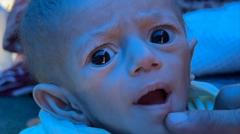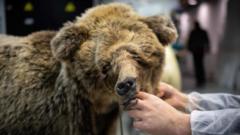Tahlequah, the killer whale who garnered international sympathy in 2018 for mourning her dead calf, is now seen grieving another loss off the coast of Seattle. This devastating event raises serious concerns for the endangered Southern Resident killer whale population, which relies on dwindling salmon stocks.
Heartbreaking Loss: Tahlequah the Killer Whale Seen Mourning Another Calf

Heartbreaking Loss: Tahlequah the Killer Whale Seen Mourning Another Calf
The iconic killer whale, Tahlequah, widely recognized for her tragic display of grief in 2018, is once again seen carrying her deceased calf, as concerns grow over the endangered Southern Resident killer whale population.
In a heartbreaking development, the killer whale known as Tahlequah, which previously drew the world's attention in 2018 for her poignant display of grief, has been observed once more pushing the body of her dead calf. Sightings reported by the Center for Whale Research indicate that Tahlequah is currently located off the coast of Seattle, Washington.
In 2018, Tahlequah made headlines when she carried her deceased newborn for an extraordinary 17 days, setting a record for the species. Sadly, the latest loss marks another tragic chapter in her story, with the Center for Whale Research noting that Tahlequah has now lost two out of four of her calves—both of whom were female. Scientists emphasize that the death of her newborn is particularly devastating due to Tahlequah's ongoing battles with reproduction.
Southern Resident killer whales, including Tahlequah, are currently classified as endangered in both Canada and the United States. Their survival hinges on the availability of Chinook salmon, a primary food source, which has been experiencing severe declines in recent years. Research from the University of Washington links failures in reproduction to nutritional deficiencies and the struggles these whales face in accessing adequate food sources.
As Tahlequah travels along the Pacific coastline, averaging about 120 kilometers (75 miles) a day, the emotional weight of her journey underscores the plight of the entire Southern Resident killer whale population, further raising alarms about the future of this endangered species.


















